-
Car Reviews
- All reviews
- Midsize SUVs
- Small cars
- Utes
- Small SUVs
- Large SUVs
- Large cars
- Sports SUVs
- Sports cars
- Vans
Latest reviews
- Car News
-
Car Comparisons
Latest comparisons
- Chasing Deals
Often – particularly when it’s deeply discounted to under $20,000 driveaway – the Hyundai i30 is Australia’s best selling car. So, the arrival of an all-new i30 model next month is a big deal for the Korean brand, for a number of reasons. First, the i30 makes up nearly 40% of Hyundai’s sales in Australia – they sold 37,000 of them here last year. Second, the new i30 is a test of whether Hyundai can continue to price their models sharply compared to the competition.
On first glance, the new i30 looks very solid: list pricing is actually reduced at the entry-level, while equipment levels rise impressively at every point of the range.
But for us, we’re really interested to see how the new i30 tackles that second issue: pricing. Hyundai are caught between two goals – whether value for money, or premium engineering, is more important. The new generation i30 ushers in a very new value equation. The $19,990 driveaway deals that brought thousands of shoppers in the door are now gone for good, with the entry-level model now likely closer to $23,000 driveaway.
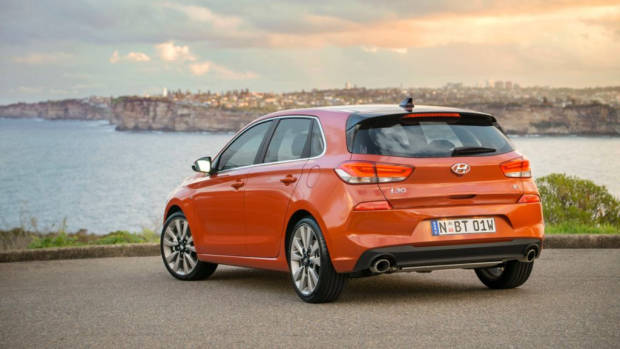
At under $20,000, the outgoing i30 echoed the well-remembered $13,990 Excel of yesteryear – but while the old i30 model wasn’t a bad drive, overall refinement trailed the segment’s dynamic leaders: the Volkswagen Golf and Peugeot 308.
The new i30 is out to close the gap to the Golf and Pug, and it will pick up on the more sophisticated engineering efforts that boosted more recent Hyundai models, like the Tucson SUV and Elantra sedan, to near the top of their respective classes.
But the cost of building a car that drives with premium dynamics is prohibitive. $19,990 driveaway deals are not possible. At that price, there’s no profit – there is almost definitely a loss.
That’s why, despite the fact it’s officially $500 cheaper than the car it replaces, the new Hyundai i30 is going to be a more expensive car to buy, from now on. Nobody paid the $21,450 price of the old Active base model – they just waited for a regular $19,990 driveaway sale. Hyundai have indicated that the new i30 will abandon that price point.
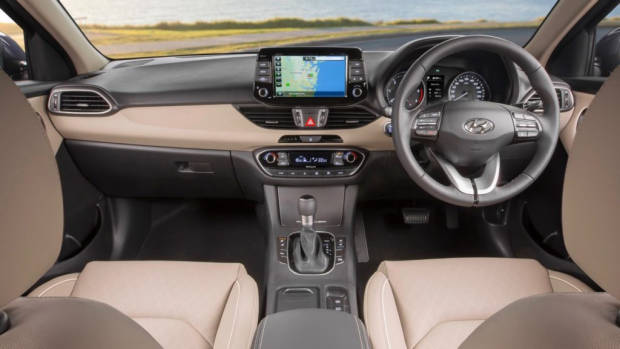
And this is a good thing. Some outlets are going to criticise Hyundai for realistically pushing the i30 price up – but marginally higher purchase prices will allow Hyundai to build a substantially better and safer car, while allowing sister brand Kia the room to market their related Cerato as a sub-$20,000 small car, reducing in-house sales cannibalisation.
Despite all this, the new i30’s base model, still called Active, remains a cheap car priced at $20,590 (plus on-roads). This sharp price has been achieved by keeping things simple. There’s no small turbo in the base car, like a Golf: the 1.4 turbo seen at the 2016 Paris Motor Show will not be coming to Australia. Instead, the Active keeps a naturally-aspirated engine, though this two-litre is more powerful and torquey than the old 1.8-litre, making 120kW and 203Nm.
Hyundai says the Active gains about $2,000 worth of equipment over the second-gen car – including standard navigation on an 8-inch screen that also offers Apple CarPlay and Android Auto and DAB+ digital radio; LED daytime running lights; automatic headlights; a hill hold function, and tyre pressure monitoring. But there are no rear air vents – until you get to the top of the range.
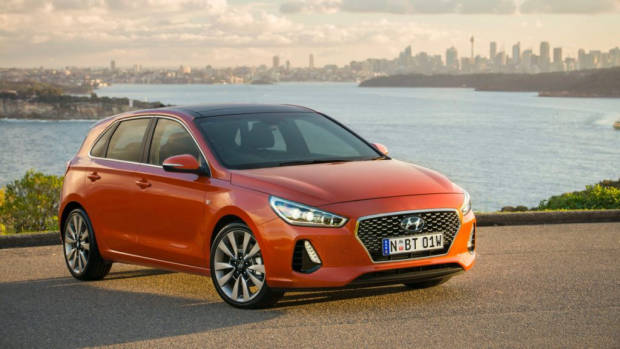
However, basic torsion beam rear suspension sticks around – not just in the Active, but also in the diesel-only Elite ($28,950) and Premium ($33,950) models. Those variants carry over the very solid 1.6-litre turbo diesel producing 100kW and 300Nm, or 280Nm in the manual.
It’s at that Elite level where decent safety technology arrives, with autonomous emergency braking, blind spot monitoring, rear cross traffic alert, active cruise control and lane keep assist standard on the Elite, Premium, SR and SR Premium models – except the SR manual, which misses out on the auto’s active cruise, lane keep assist, attention assist and electric parking brake. Why is a mystery – the upcoming Golf Mk 7.5 can bundle all those features with the stick-shift.
These safety features will be offered in an option pack on the Active base model, but not immediately from launch – they’ll arrive by Christmas.
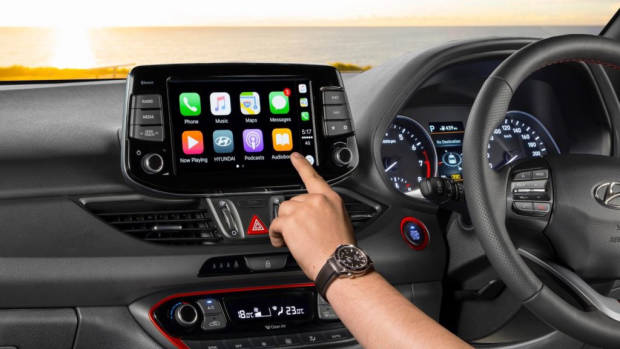
The torsion beam is shown the door and replaced by a much more sophisticated multi-link rear suspension in two models that are the real focus of the new i30 range: the sporty SR ($25,590 manual, $28,950 automatic) and SR Premium ($33,950). Aside from what’s likely to be much tidier rear-end balance, the SR pair pick up Hyundai’s 1.6-litre, 150kW and 265Nm turbo petrol. Put another way, you’re getting Mk 5 Golf GTI outputs for impressively little money.
The SR model looks to be the sweet spot of the third-gen i30 lineup, matching the Elite for features, including the safety package, except for the aforementioned missing features in the bargain SR manual variant. Hyundai tell us the SR adds about $5,000 in new equipment but prices rise a nominal $100.
The SR Premium – and the Premium it is based on – are both $33,950 and add upscale features like leather seats, which are 10-way adjustable for the driver, dual-zone climate control and those rear air vents, finally.
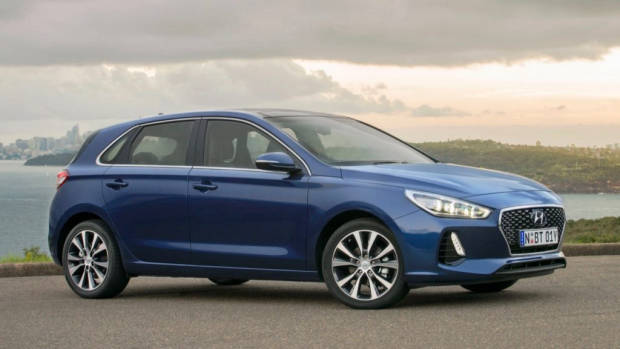
So with the SR Premium and Premium tied for price, would anybody buy the Premium? Only if you value the diesel’s admittedly impressive economy enough to tolerate an inferior rear suspension setup. If the turbo SR’s 7.5L/100km is good enough, that’s where we think our money would go.
But we’ll be in a position to say conclusively after we drive the new i30, which is being launched to Australian media including Chasing Cars in a couple of weeks, so hang around for the video and first drive report in early May.
From observing it in the flesh at the Paris Show and in photographs the new i30 is a handsome vehicle with more than a little Teutonic influence.
However, the real challenge for Hyundai here will be working out how to continue to sell big numbers of i30s. With the temptation of a $19,990 driveaway base model now gone for good, will buyers swallow paying closer to $23,000 for a base model on the road? The initial months of sales should prove pretty interesting.

Latest news
About Chasing cars
Chasing Cars reviews are 100% independent.
Because we are powered by Budget Direct Insurance, we don’t receive advertising or sales revenue from car manufacturers.
We’re truly independent – giving you Australia’s best car reviews.